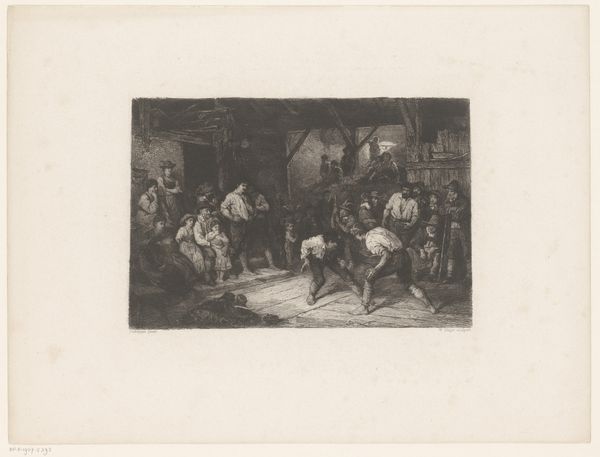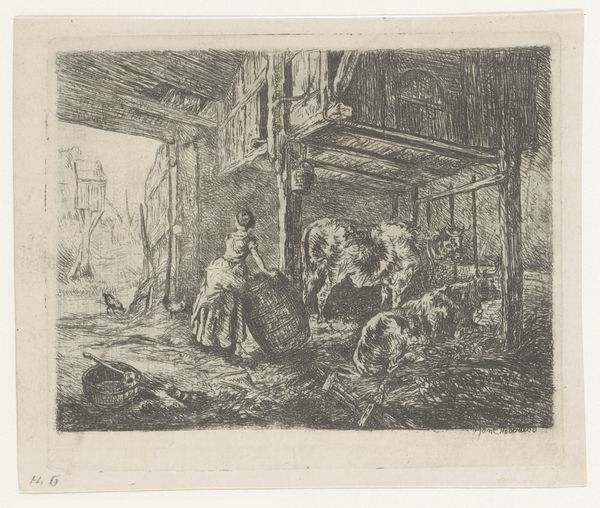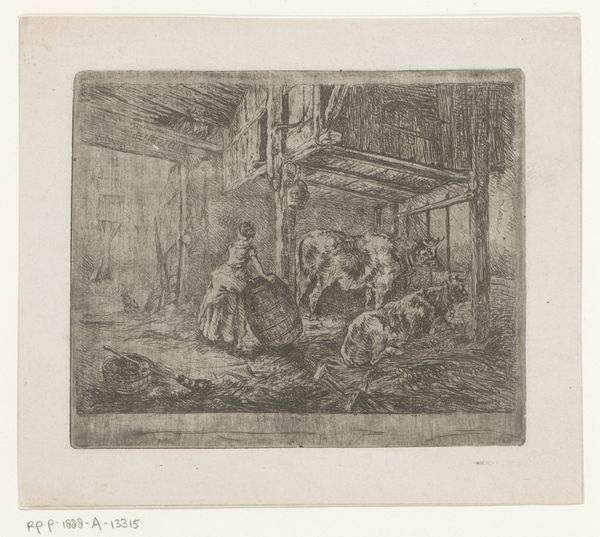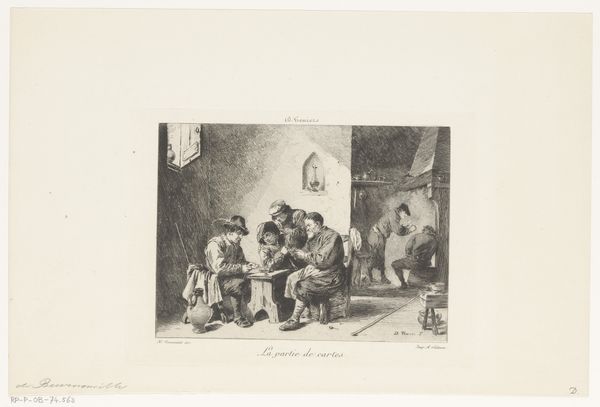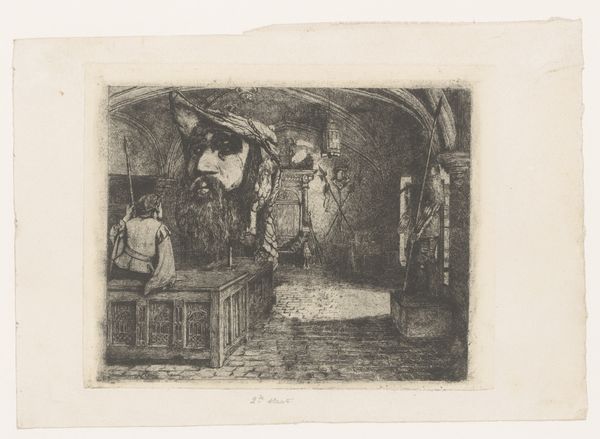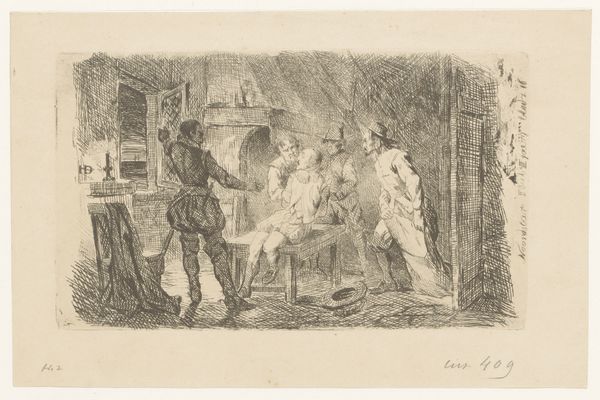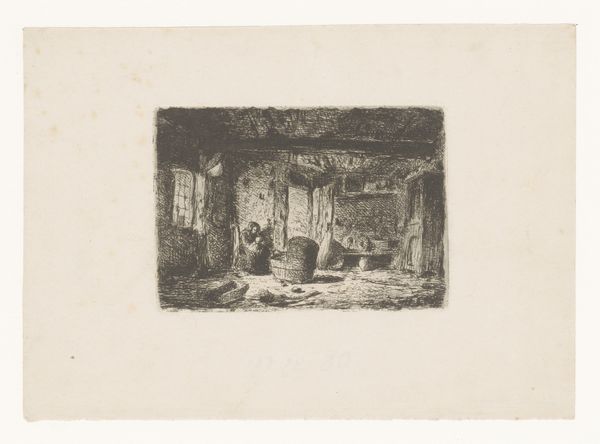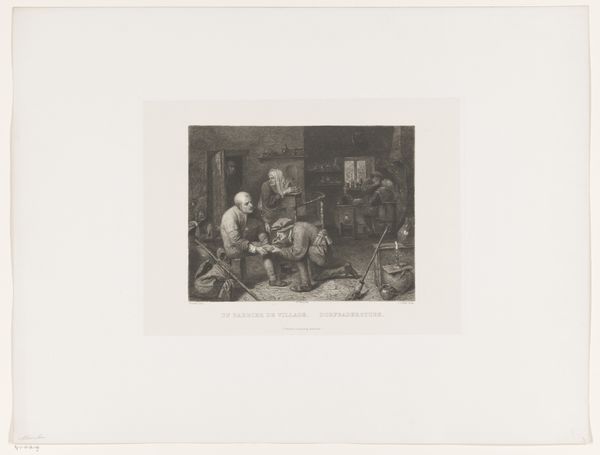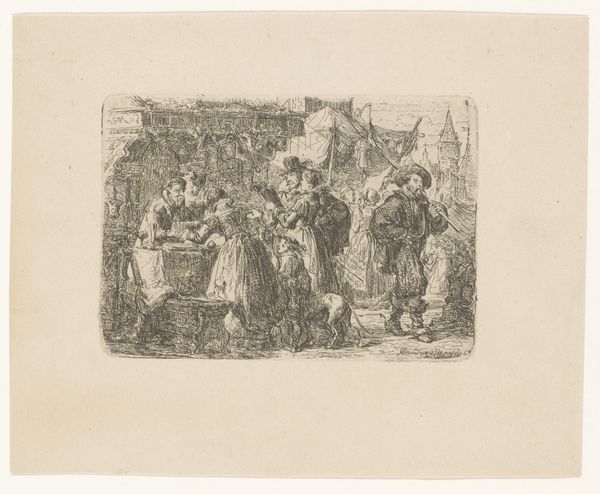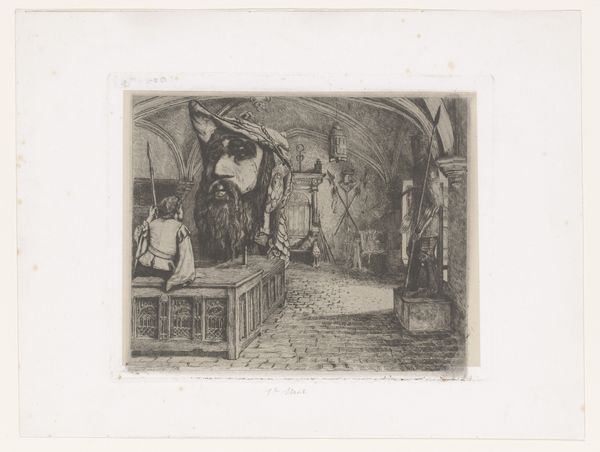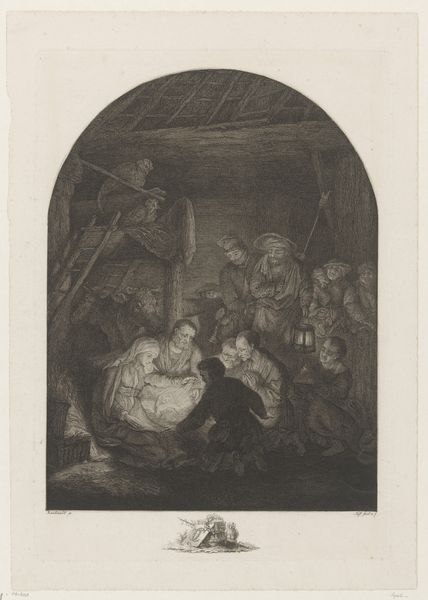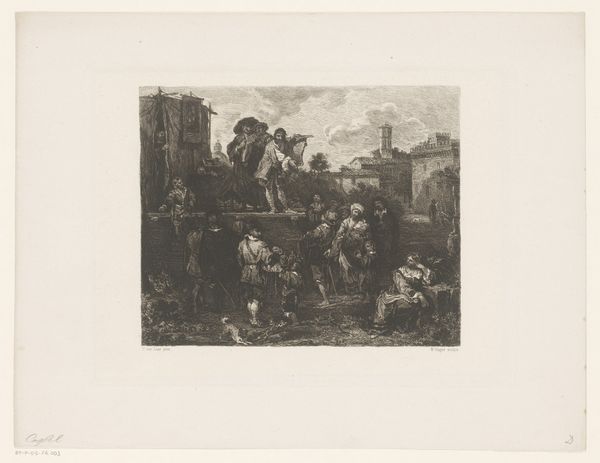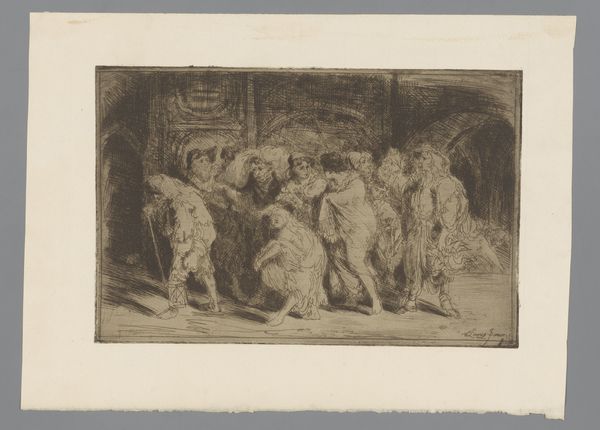
drawing, print, etching, ink, engraving
#
drawing
#
dutch-golden-age
#
ink paper printed
# print
#
etching
#
old engraving style
#
ink
#
pencil drawing
#
ink drawing experimentation
#
genre-painting
#
engraving
Dimensions: height 171 mm, width 222 mm
Copyright: Rijks Museum: Open Domain
William Unger created this etching, "Dansend paar," using metal plates and acid. Unger was part of a revival of etching as an original art form, after a period when it was mostly used for reproduction. The image is built up from many tiny, closely-worked lines. The contrast between the dark interior and the light falling on the figures creates a dramatic scene. You can almost hear the music and the clatter of dancing feet. Etching requires both artistic skill and technical knowledge. The etcher carefully coats a metal plate with a waxy ground, then draws through the ground to expose the metal. The plate is then immersed in acid, which bites into the exposed lines. The longer the plate is left in the acid, the deeper and darker the lines will be. This was a labor-intensive process, but Unger and his contemporaries saw it as a more direct and expressive medium than engraving. It allowed them to create images with a unique sense of texture and atmosphere, as we see here.
Comments
No comments
Be the first to comment and join the conversation on the ultimate creative platform.
